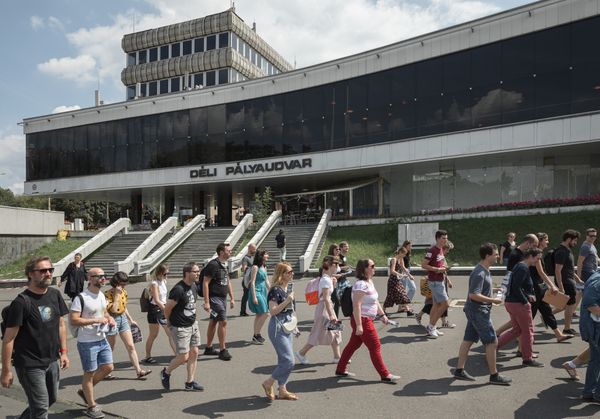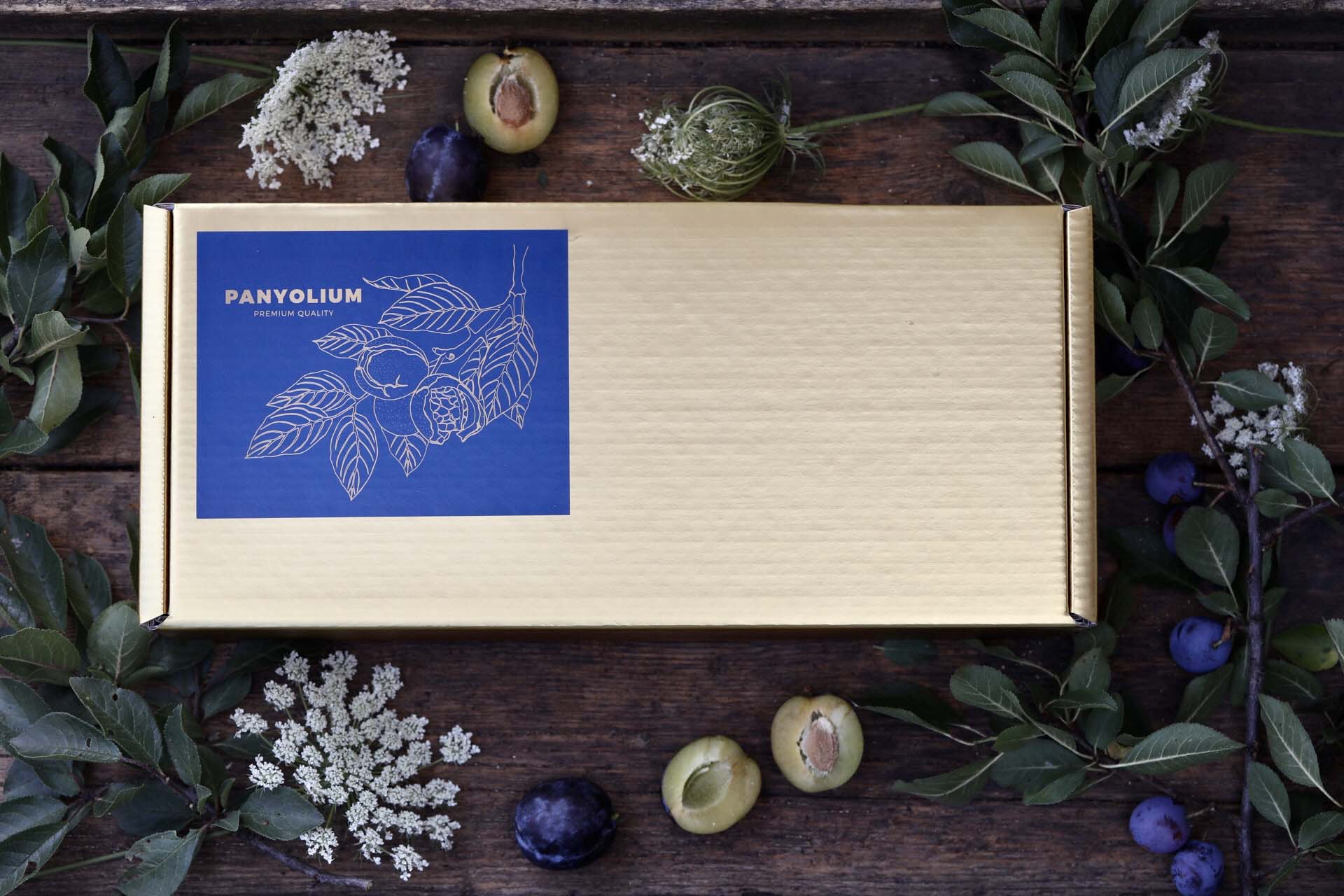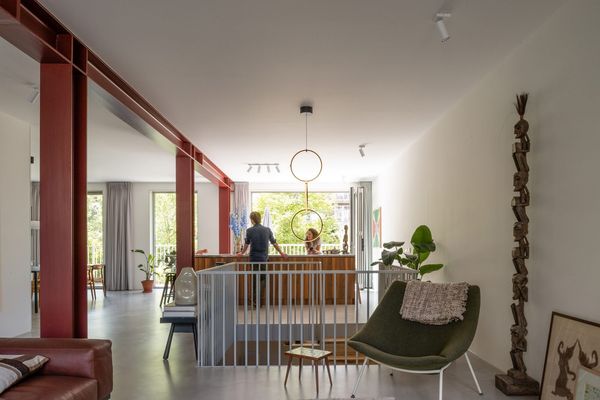The fate of mechanical engineer István Mórucz was sealed quite early on. Of course it’s not a rule that everyone whose sign was a plum in nursery school is destined to mix plum jam as an adult, but in the case of István, this is exactly what happened. The meeting of Szatmári traditions and modern technology in the kingdom of “jungle fruit from the floodplain”, in Panyolium manufactory. Interview!
István, you were raised in Panyola, and are a qualified mechanical engineer. What was the path that led you to launch Panyolium? When and how did the story of the brand start?
It all started in nursery school, where my sign was a plum, but then I waited a little longer. In the first few years after I started working, I got an insight into the food industry and immediately knew that I wanted to create a manufactory where the Szatmári traditions and innovation meet. My dream was a high quality workshop, where the fruit, which yields in the area abundantly yet is still quite underrated, becomes something special. So we started working, and constructing – or demolishing, to be more accurate – a whole new manufactory seven years ago.
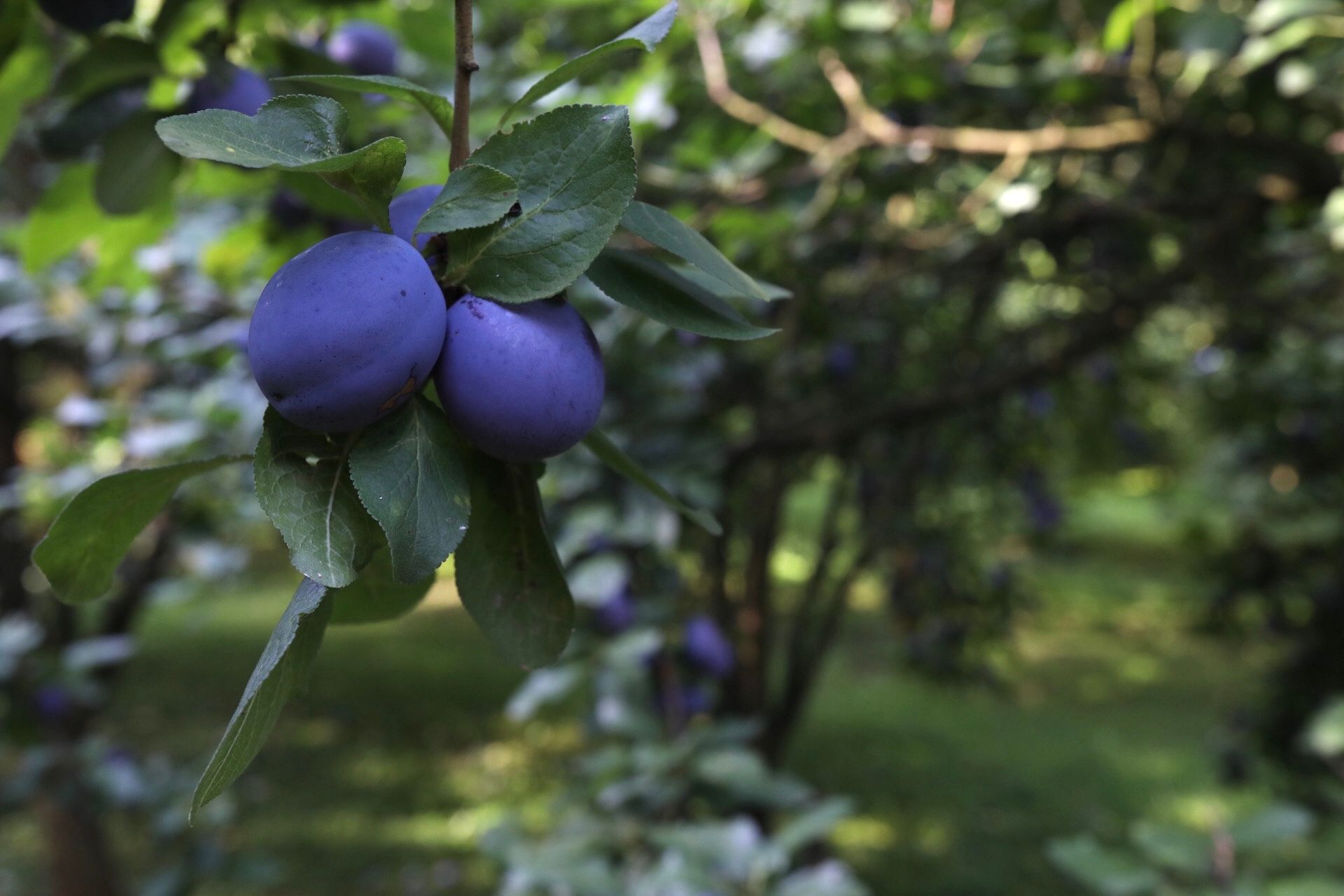
This is a family business, with tons of tasks, as you write it on your website: producing, drying, cooking, processing and packaging all takes place in Panyolium manufactory. Of course, in addition to all this, you also need to work on branding. Who are the members of your team and who is responsible for which tasks?
We indeed started out as a family business, but in the past years, our team has expanded significantly. We only work with people who live in Panyola, to whom we would like to provide a balanced and long-term livelihood, and so we not only employ them during the season. Currently our team consists of six members, who participate in every work process from harvesting to the preparation of the Christmas packaging. This workshop is really ours, in the strictest sense of the word: we work and create there together. Me and my wife are in charge of tasks related to production management, product development and branding – this creative work is also part of our everyday life. One minute we are sitting on the tractor, in the next we are switching the objective of the camera, and in the afternoon a new post or blog entry is completed and ready to be published.
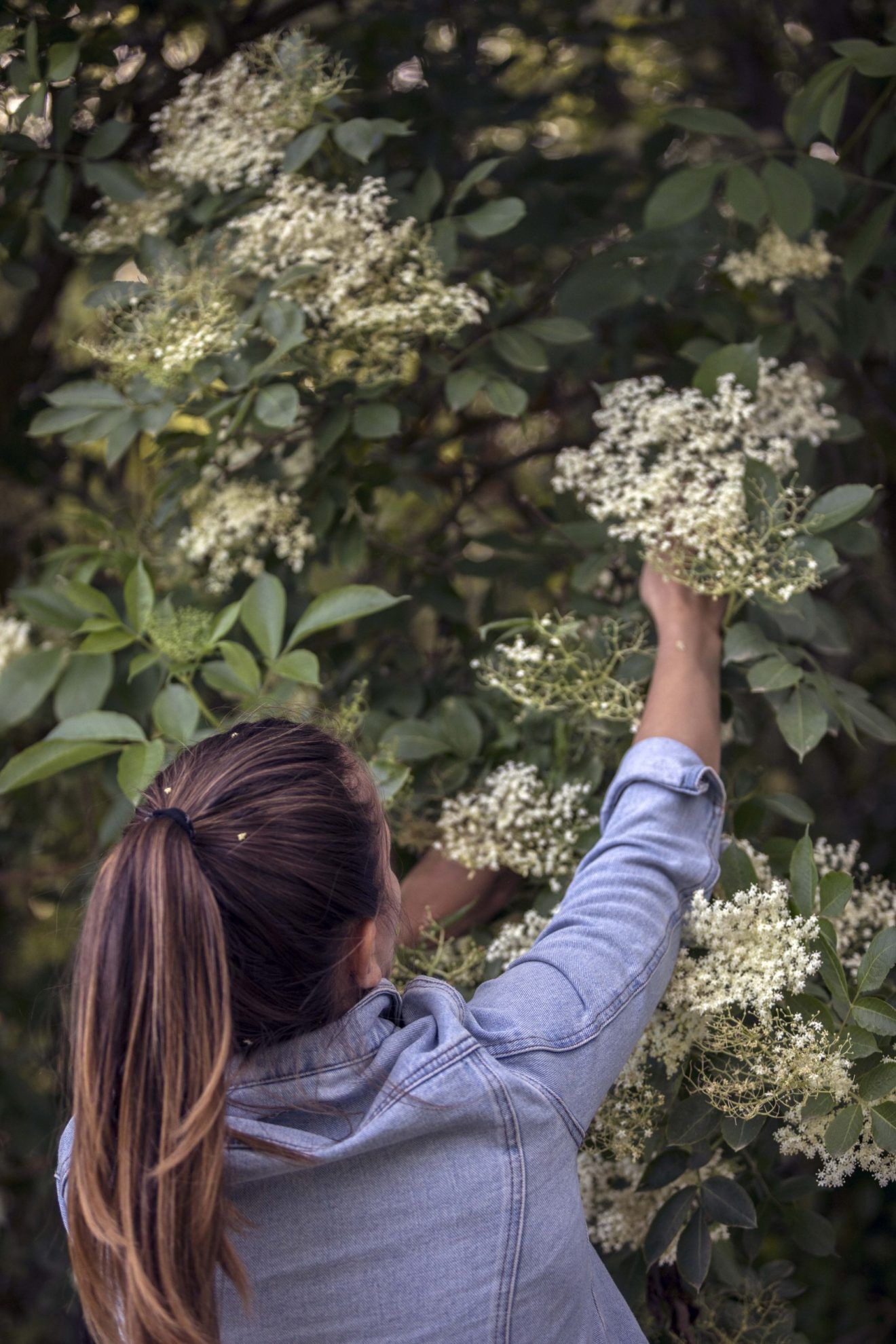
You work with a quite wide palette in terms of premium quality, fresh produce: Beregi pear, Szatmári apple, Milotai dió and the “nemtudom” (I don’t know) plum, which may sound unfamiliar to the untrained ear. What is peculiar about these varieties, and what do you make out of them?
These fruit varieties are special because every one of them is a regional product of the land, and as Panyola is confined by three rivers, they are also called “jungle fruit from the floodplain”. Compared to other places, the average yield of the trees are higher, the taste of the produce is more intensive owing to the unique micro climate. The Szatmári “I don’t know” plum is a variety with a protected designation of origin, this is also verified by the genetics research we conduct with Szent István University currently. We primarily make natural dried fruit out of the produce, these are all free of sulfur, sugar and preservatives. We cook jam of the “I don’t know” plum every fall. As far as we are concerned, this variety is the best for making traditional Szatmári jam: we cook it on open fire, in a copper pot, for one day and one night. It doesn’t have sugar in it either. Practically we do not view it as a simple jam, for us, this is the spirit of the plum. We also started experimenting with natural dried fruit – we make tea out of them. This is a very new and exciting direction.
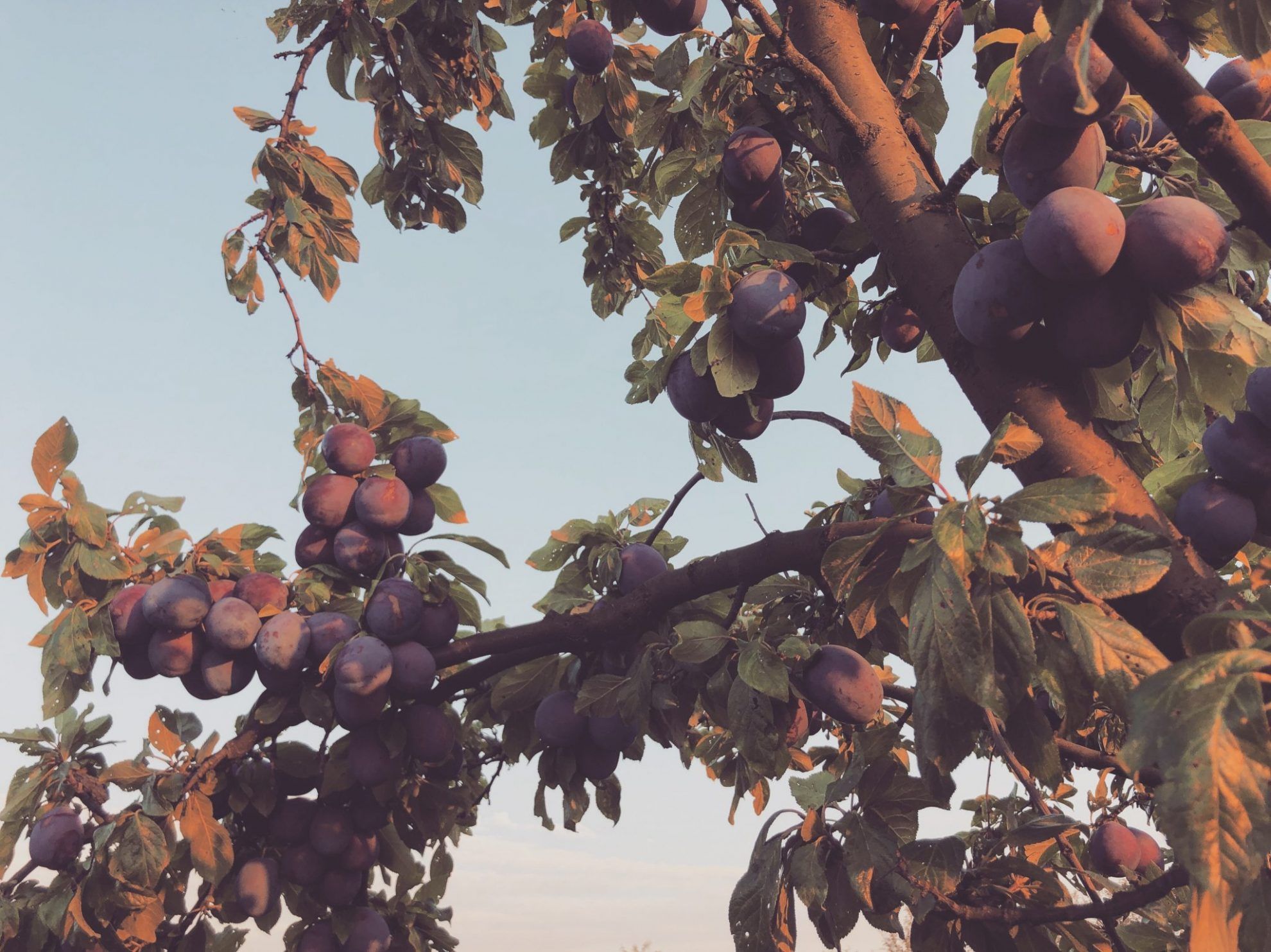
You dry the fruit on wicker and broom, and you cook the plum jam, as you’ve mentioned it, in a copper pot. The method of manufacturing also influences the taste, this is what gives the smoky flavor of plum jam. Could you tell us a bit about the traditional methods and work processes you apply in the manufactory?
First we wash and sort the fruit, and we only process the pieces the quality of which is truly adequate. Owing to an innovative solution based on a traditional system, we use a high performance wood-burning stove. This means that we give wood to the fire from morning till late at night so that we can maintain a balanced temperature in the “fruit sauna” during the approximately one and a half day long drying process. Not only do we keep the wicker baskets because we want to preserve traditions, but also because wood breathes – the dried fruit has a completely different quality if it is not made within industrial circumstances. Our favorite activity in the fall is cooking plum jam for long days: at these times, we guard the dark mass forming into a spicy jam day and night. Following the traditions, we make the jam without adding any sugar. It’s like wine: every vintage shows something different. The longer we wait the more the taste of the jam changes – it changes year by year without impairing quality, on the contrary!
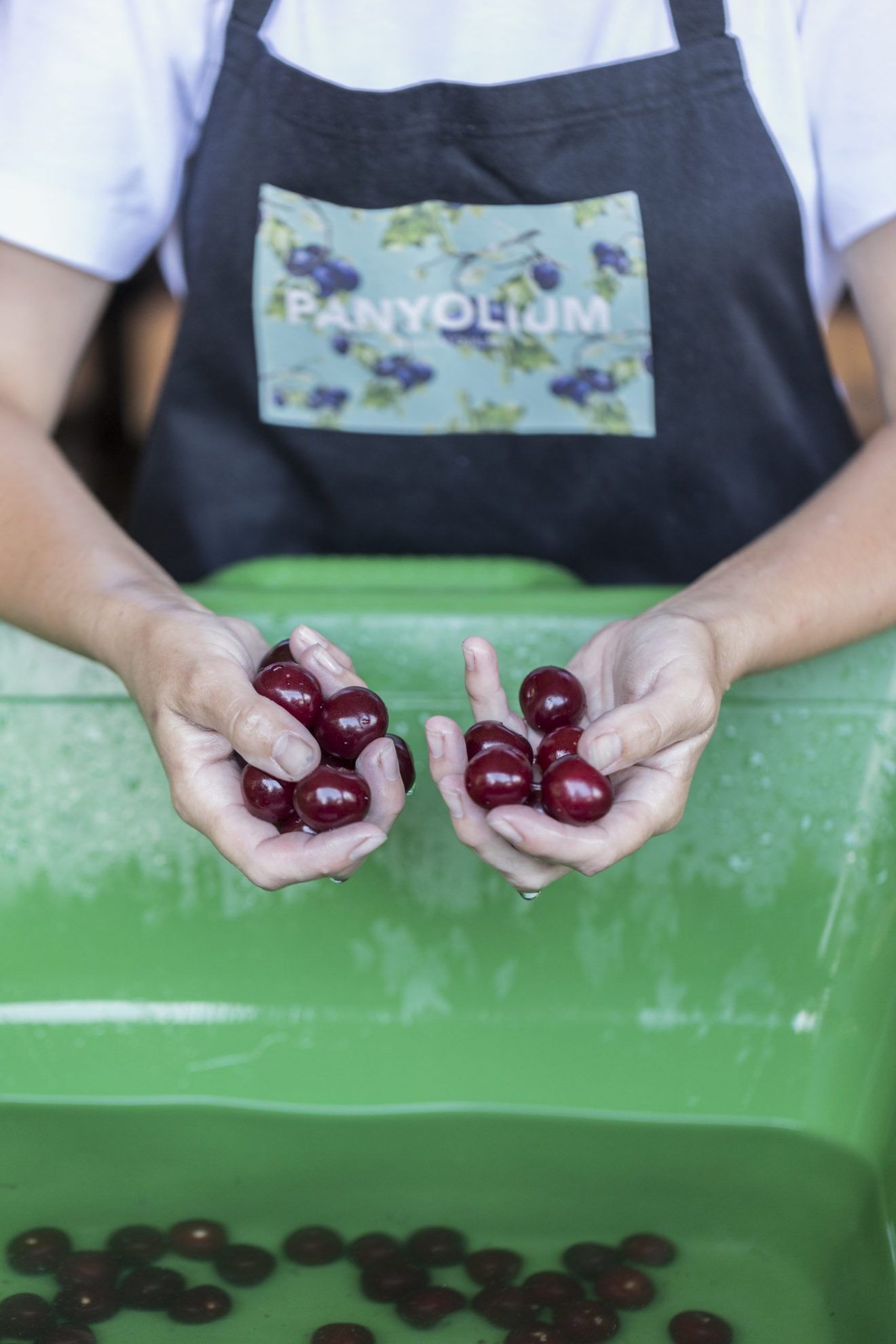
Verés, palolás, szedés, ponyvázás, vitorla, vesszőkas – these are the concepts of traditional hand-drying and jam cooking, with which everyone can get familiar with in your Gyümölcs ManufakTúra program. How should we imagine a session like this in Panyola, and what do these terms mean?
We harvest the ripe plums on the day before the jam is cooked, exactly when it starts to wilt at the stem and comes off the tree if we shake it. We lay down large sheets under the trees and we beat the fruit off the tree with long wooden sticks. As these trees have extremely thick and thorny crowns, it would be really hard to it with our hands. There are broken branches, leaves and bugs amongst the fruit that has fallen off the tree this way, so we need to do some “palolás”. Palolás could also be the predecessor of conveyor belts, as the tool is made of some planks on which we roll down the fruit to be sorted.
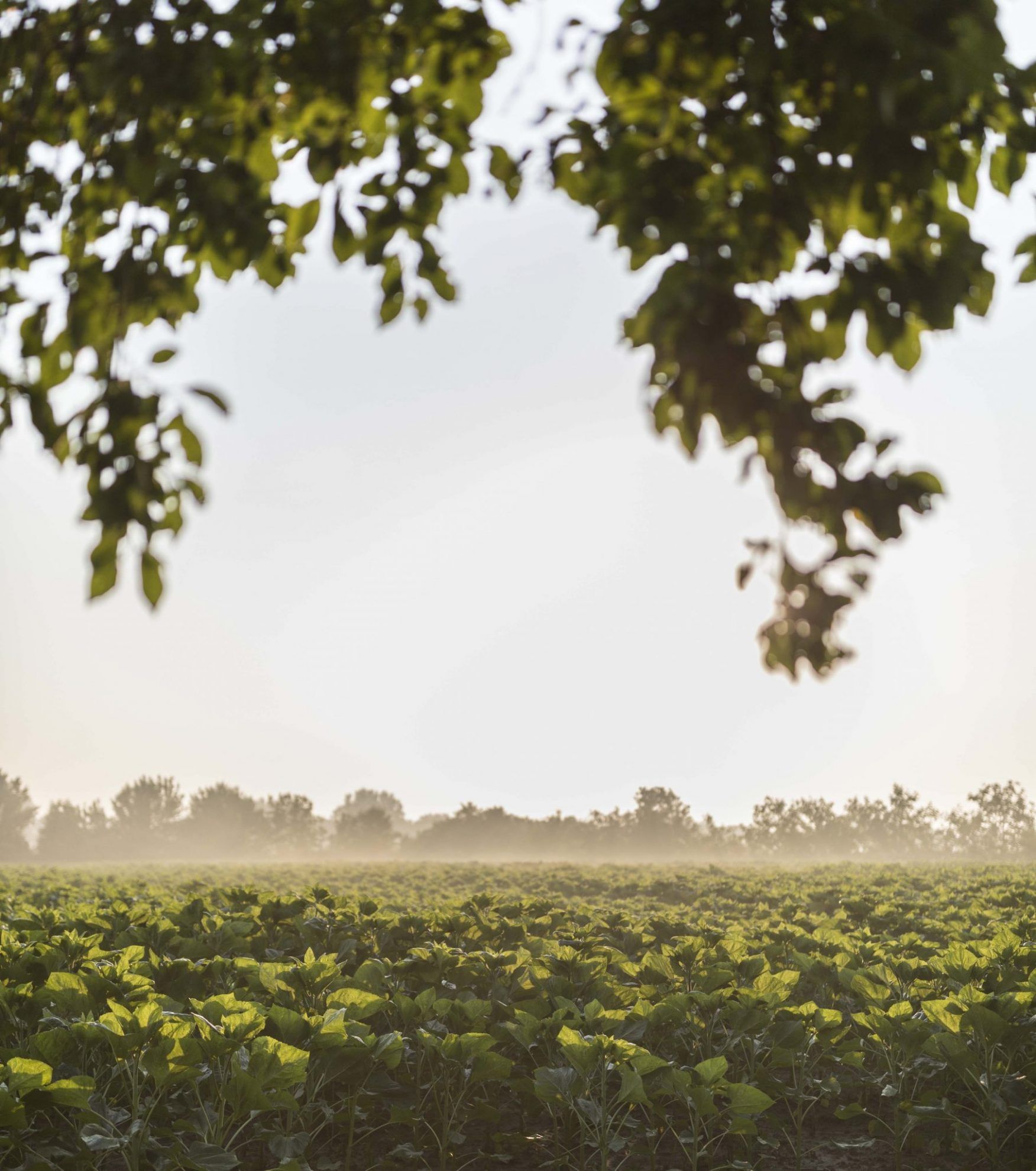
After harvesting comes sorting, and washing the fruit with water in several rounds. We decide after these processes whether we should make jam or dried fruit out of it. If we opt for jam, we cook it in a traditional wood-burning copper pot, and we call the tool used for mixing the jam a “vitorla” (sail). In the course of the program, the visitors can participate in all work processes and can taste the fresh, still warm dried fruit. At the same time, we also present the hidden parts of the manufactory, the fragrant dried fruit warehouse, the manual packager, and the rooms decorated with local ethnographic photographs, in which tasting, product development and experimenting takes place.
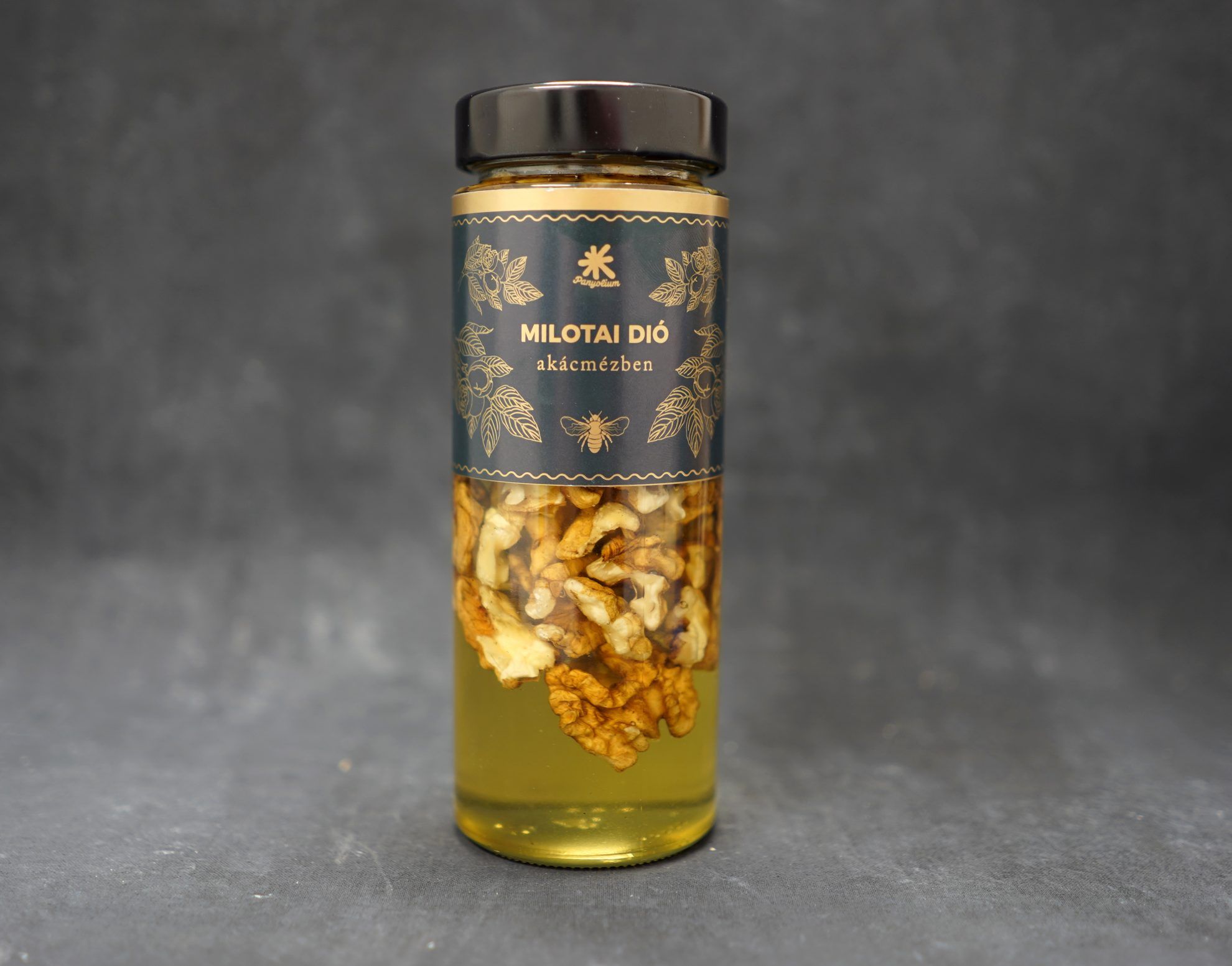
Let’s talk a little bit about your visual identity. The gold and dark blue shades on the labels allude to the premium nature of the products and the use of premium quality materials – the gift boxes are placed into golden boxes, and the fruit also appears on the circle-shaped labels of the white bags hiding the dried fruits in the form of line drawings. In addition, you also have a colorful, rich and illustrative design, primarily used on the packaging of jams. Who designed the visual identity of Panyolium and what was working together like?
We imagined the visual identity of Panyolium together with graphic designer Eliza Mikus. Even though we don’t work together any more, we would like to further develop what we started with. She painted the fruit here, in the orchard at Panyola. It is important for us to think together, for every element of the packaging to reflect the world we live in here, and the value we consider important to preserve.
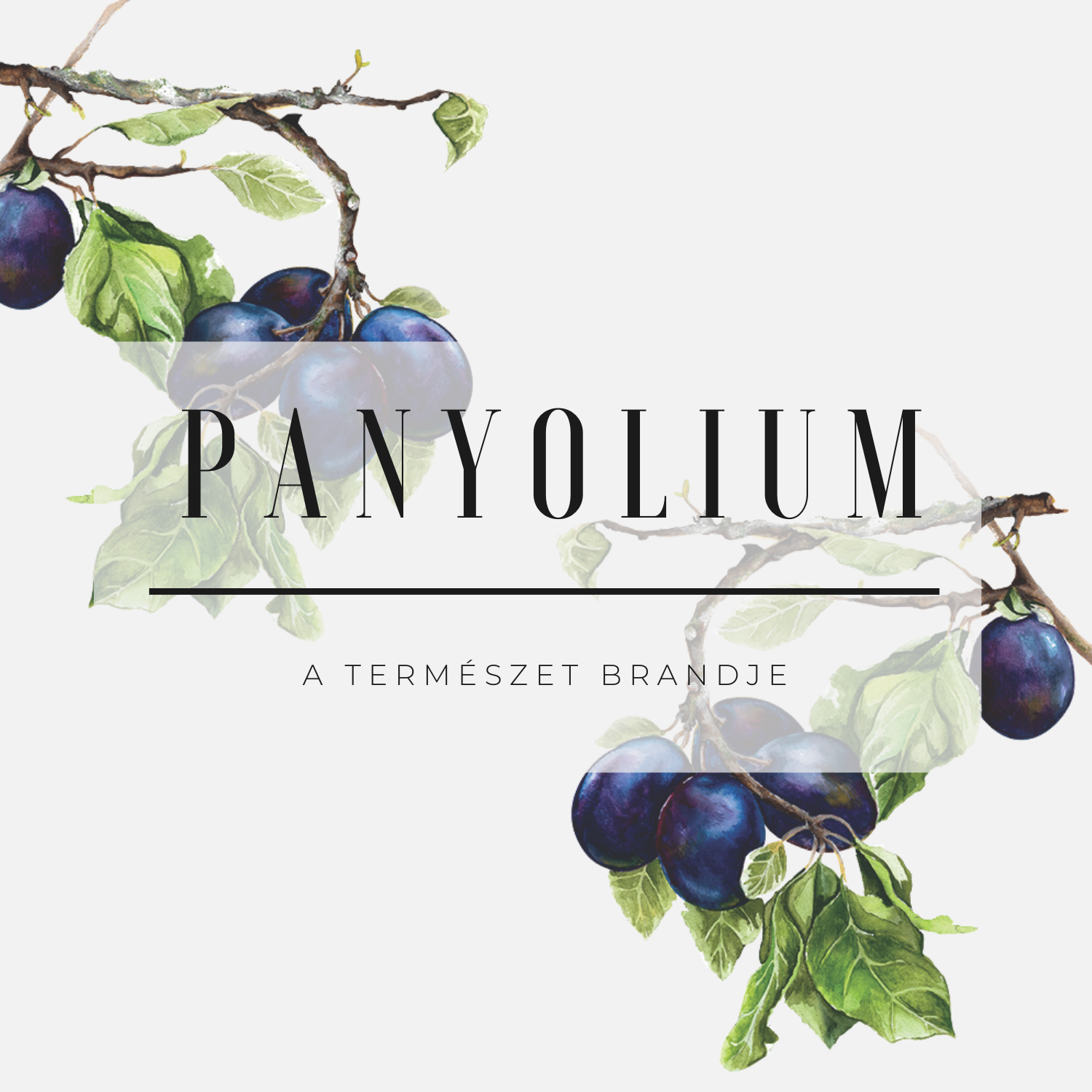

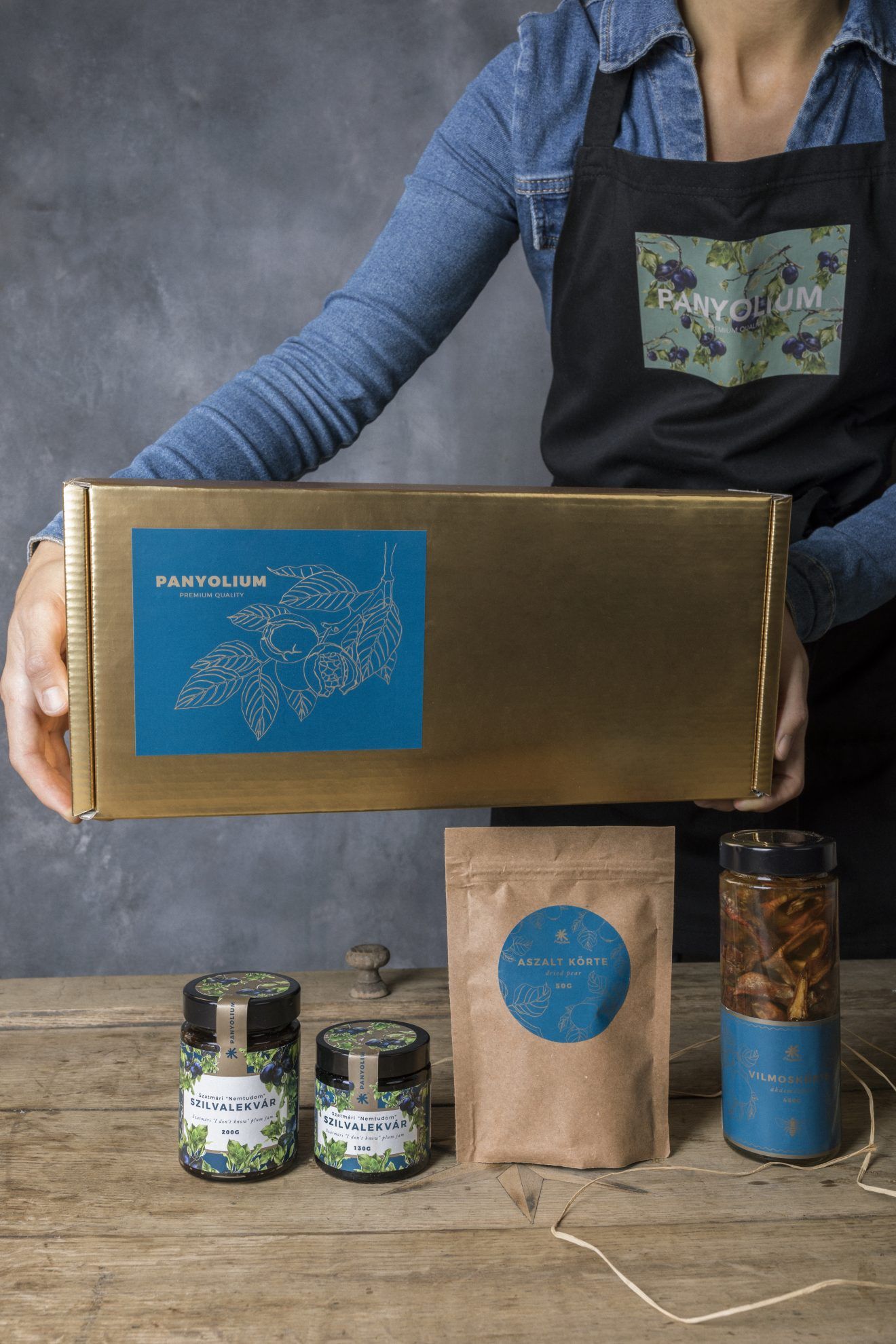
You primarily sell your products through your own online store. Where else can we meet the Panyolium products?
One of our other favorite places is a másik bolt in Wekerle – we always come up with something with them. Our teas are distributed by Zhao Zhou Tea House, while our plum jam can be tasted at Akvárium and the bakeries of Á table. The Panyolium products are also available in the store opened by Nánási Pál and his wife at the shore of Lake Balaton. We also have good memories about last year’s Ajándék Terminál fair, where we also got to present our entire repertoire.

HIGHLIGHTS | Endless vacation
